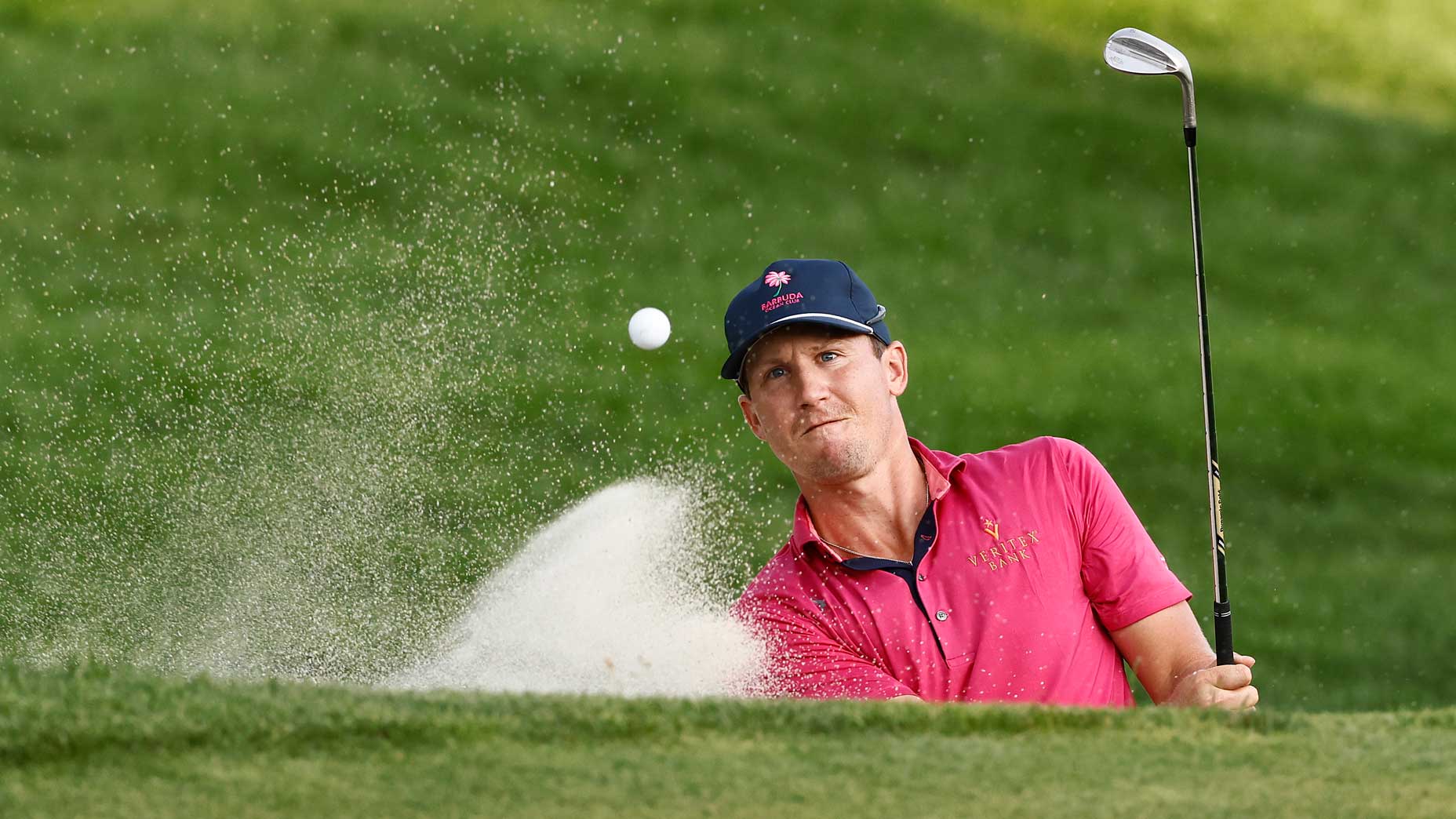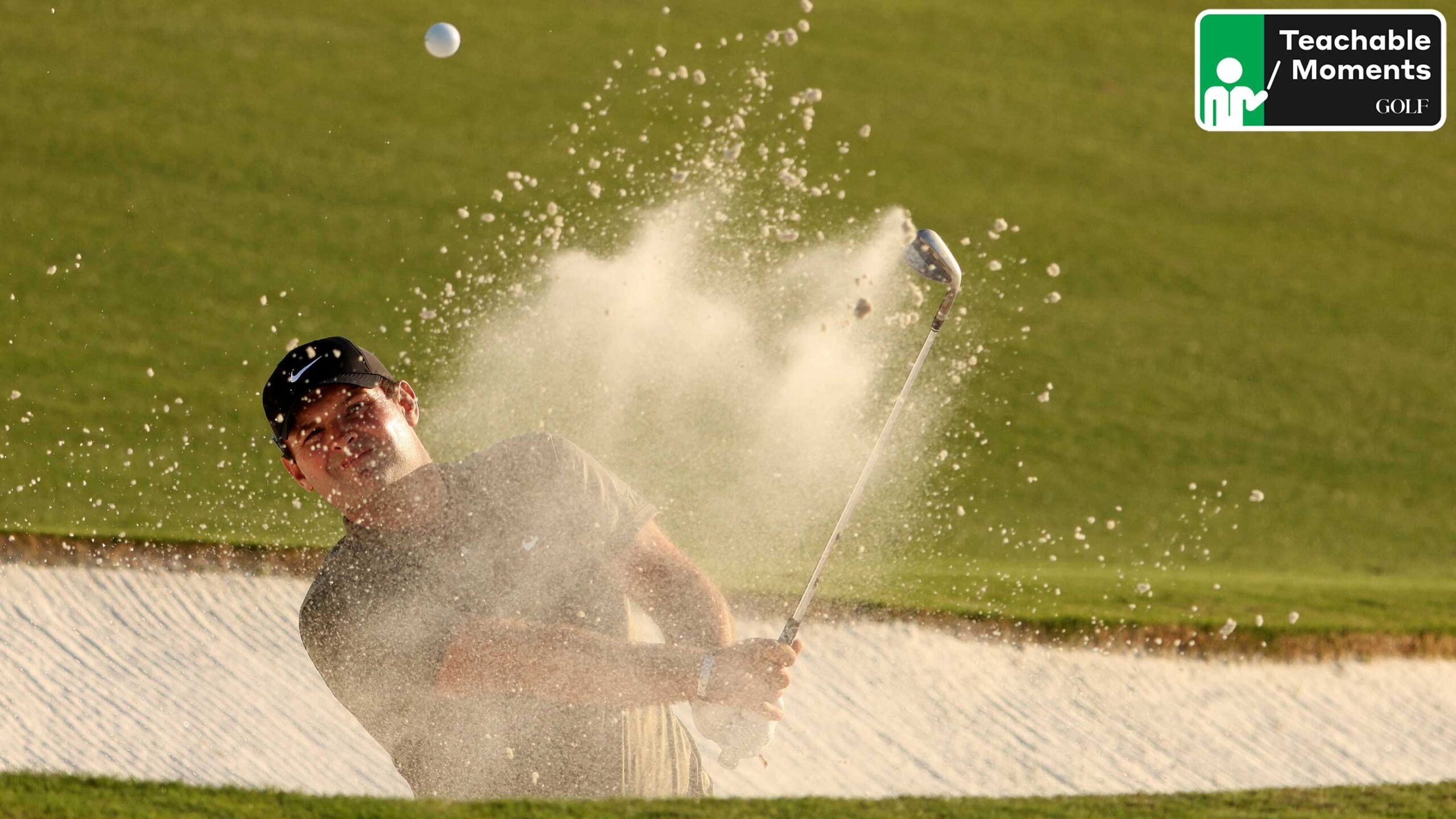

Your handicap should determine how you approach a bunker shot.
Getty Images
Conventional bunker instruction has long said the best technique is to take an open stance with an open clubface. But for some players, that might not be the best strategy.
Through the years of teaching at my golf school, I’ve always had more success teaching students with higher handicaps a square stance and square club face as it dawned on me that each level of handicap has different expectations as it pertains to a “successful” bunker shot.
For a 30+ handicap, the goal should be to get the ball out of the bunker, while a 20+ handicap wants to hit the ball somewhere on the green. With more advanced players, those goals get loftier. For 10+ handicaps, the goal should be to get the ball somewhere close to the hole, while a single-digit handicap or professional golfers is trying to hole the shot.
Higher handicap players have a lot on their plate as they learn the game. To keep things congruent, matching their bunker technique to other shots they regularly use around the green seems logical. Also, most golfers do not play or practice enough to get the relationship between how much they open their stance to how much they open their club face cohesive. We know the most important variable in the bunker is where we enter the sand relative to the golf ball. Higher handicaps have a harder time creating the precision a lower handicap player can with their entry point in the bunker.
So, what should you do in a bunker based on your handicap? Check out my guide below.
30+ handicap
A 30+ handicap should setup with a square stance and club face with the ball in the middle of their stance. Treat it like a pitch around the green the only difference is you are hitting sand instead of brushing grass. Default to less loft if there is no bunker lip in play. A pitching wedge or nine iron has less loft so if we strike too far behind the golf ball the less lofted club face can save the shot and get us out.
20+ handicap
A 20+ handicap should do the same as the 30+ handicap except for using a little more loft in the bunker. Every other part of the technique should remain the same.
10+ handicap
A 10+ handicap should setup with their stance and club face slightly open and create a slightly more upright, outside-to-in swing path intention. This is closer to the typical bunker technique players are taught.
Single digit or pro
A single-digit handicap up to professionals should setup with their stance and club face very open and create a steep outside-to-in swing path, matching the conventional bunker technique we are taught.
In order to be the best bunker player you can be, match your technique (and your expectations) with your handicap level. Your play from the sand is sure to improve.










